How to Hide Speaker Wire with Hardwood Floors (5 Methods)
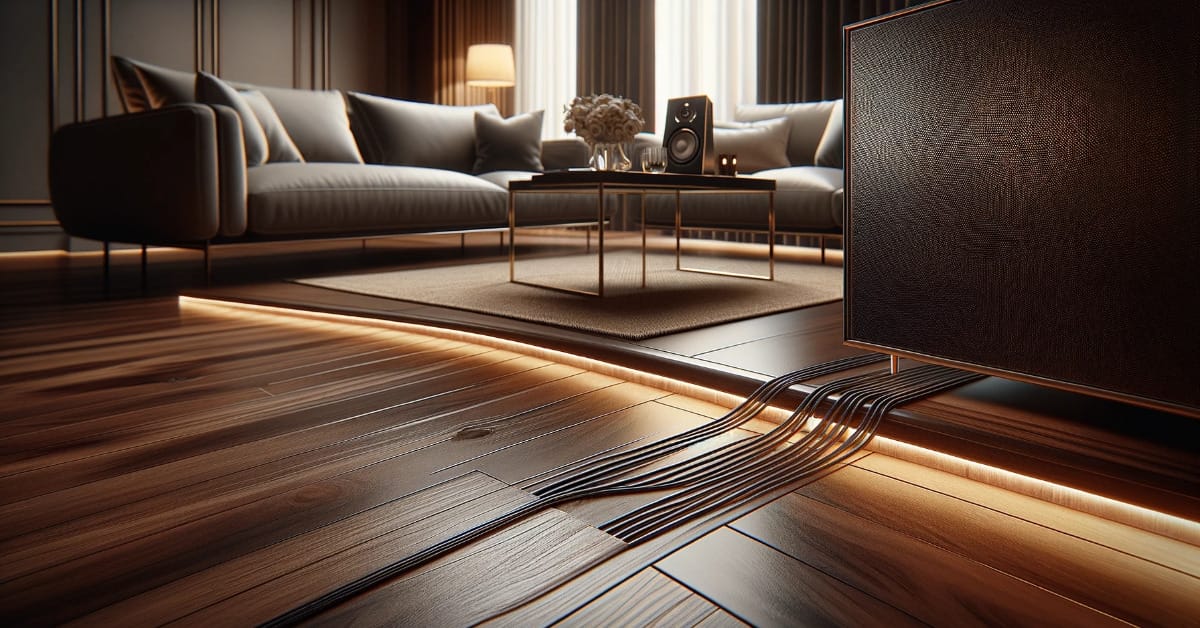
Speaker wires all over your hardwood floors look terrible and can cause safety issues.
To fix this you have to find a way to hide those hideous speaker wires and cables. So, how do you do it? There are many options available to you. You can tuck them under the carpet, hide them under the baseboard, use crown moldings or go wireless completely.
In this article, I will go through my favorite ways to hide speaker wire with hardwood floors.
In general, the easiest way to hide speaker wire with hardwood floors is to:
- Cover Your Speaker Wires with Adhesive Vinyl Roll
- Hide the Wires Beneath a Rug
- Use a Ghost Wire
- Use Cable Clips to Secure Wires to Your Baseboard
- Use Adhesive Cable Clips
- Connect Wirelessly
I’ll go into more detail in the article below.
What You Need
First thing first, disconnect the speaker wires and arrange them properly.
Things you need include a ruler or tape measure, wire strippers, utility knife, pliers, and a stud finder.
1. Cover Your Speaker Wires with Adhesive Vinyl Roll
An adhesive vinyl roll is a cost-effective and easy way to hide your speaker wire. You can find this product across online stores or any hardware store around you.
You may want to get a large wood-patterned vinyl roll that blends with your home flooring.
Apart from hiding wires, an adhesive vinyl roll will also secure the wires to your floor so nobody can trip over them. If you live in a rented apartment, this is also a smart way to hide wires since you would not have to drill holes into your apartment’s walls. Here are steps to Cover Speaker Wires with an Adhesive Vinyl Roll
Step 1: Measure the width of the vinyl strip required to completely hide speaker wires. While at it, leave about a half-inch on both sides to stick to the floor.
Step 2: Cut the strips carefully based on the measurement. Ensure the cutting is straight.
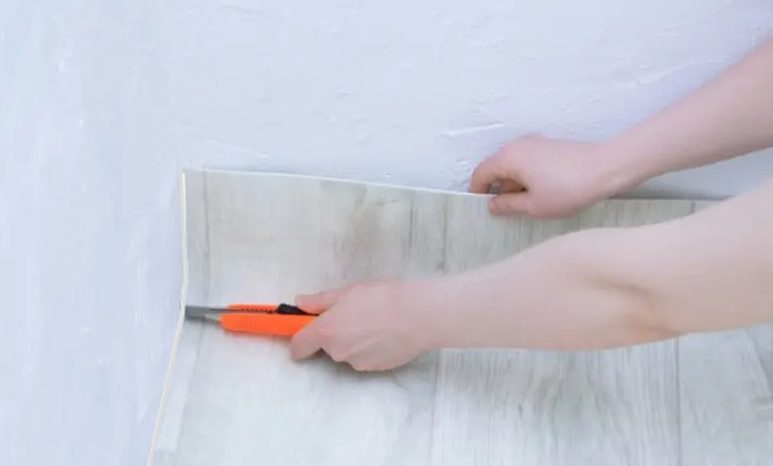
Step 3: Place the speaker wires in the position you want to lay them, such as close to the wall. One Other thing, make sure that the floors are clean and dry to enable the adhesive to stick to the hardwood floors instead of dust.
Step 4: Peel the paper off a small part of the vinyl strips and place the sticky part over the speaker wires. Carefully follow the wire with the vinyl roll and press it over. Peel off the paper as you continue slowly. Make sure you don’t bend or pull the wires during the process so you don’t damage them.
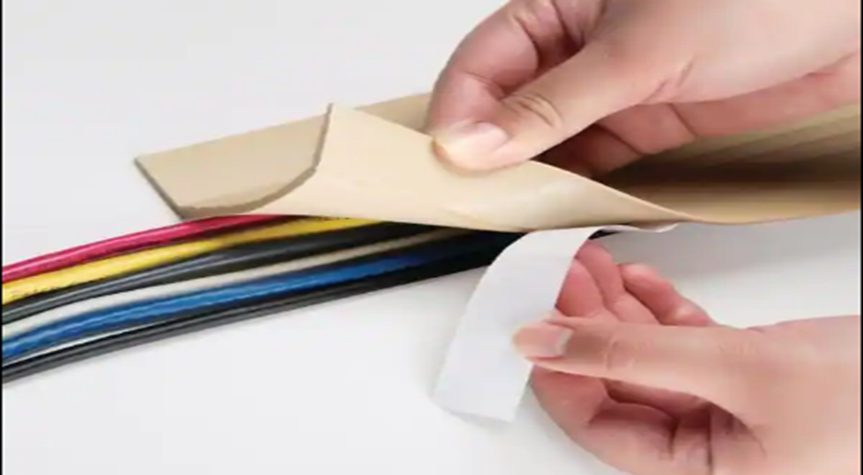
2. Hide Beneath a Rug
This is another great way of hiding speaker wire. A word of caution – do not hide open wire under your rug as this can cause a fire, make sure the wire is insulated. Here are simple steps to hide speaker wires beneath rugs in your home.
Step 1: Gently pull the carpet away from the floor around the edge of the wall until you get to the area where you want the wires to go through.
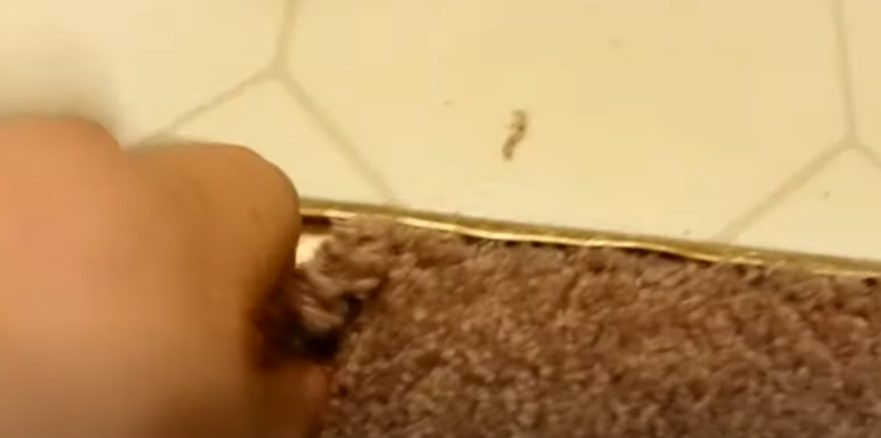
Step 2: The ideal thing is to run the wire around the edges of your walls and rugs but if your wire can’t go that way, there is an alternative.
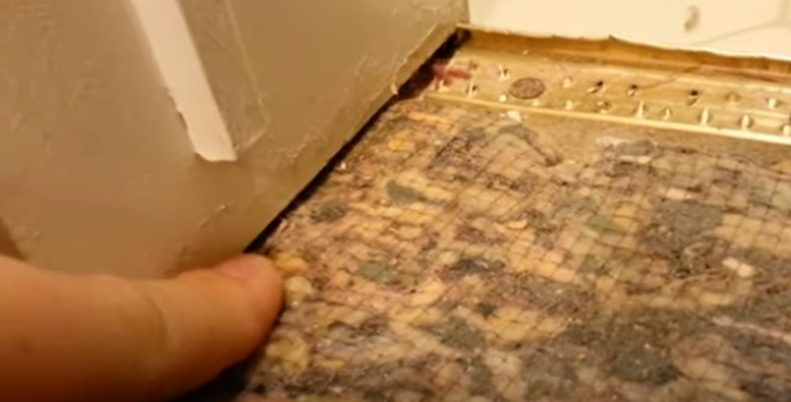
Step 3: Cut the foam underneath the rug and place the wire in between the foam. With this, the speaker wires will be secure and you won’t feel them or trip over them while you walk on the rug.
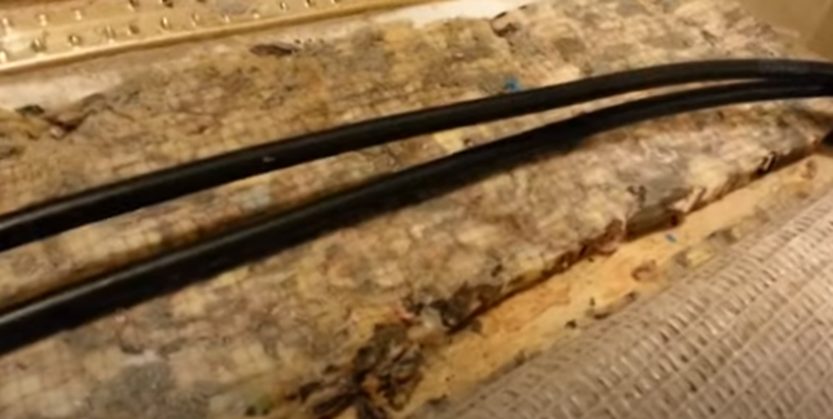
Step 4: After carefully securing the wires underneath the foam, place the rug over your floor and clip it back in place.
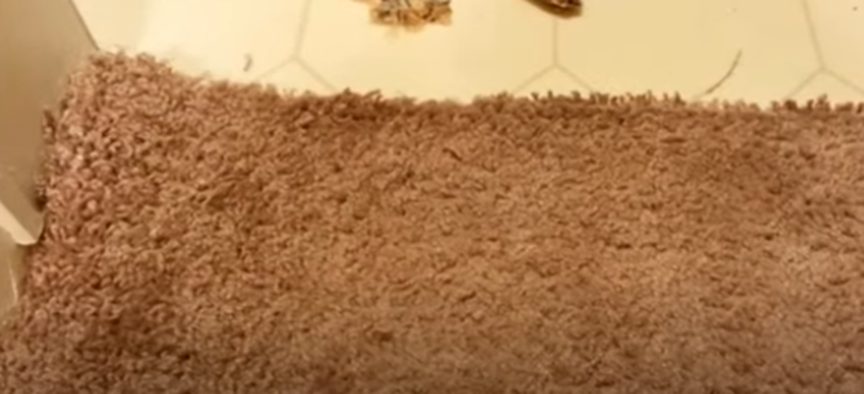
3. Use a Ghost Wire
A ghost wire is a flat, long wire that sticks to any clean surface. Ghost wires can easily blend into your floor since you can put your rug or hardwood over them. If you don’t want to glue anything to your hardwood floors, ghost wires are your best choice. Here are steps to use ghost wires to hide speaker wires on the floor.
Step 1: Place the speaker wires in the respective ports of the connector and screw them in place.
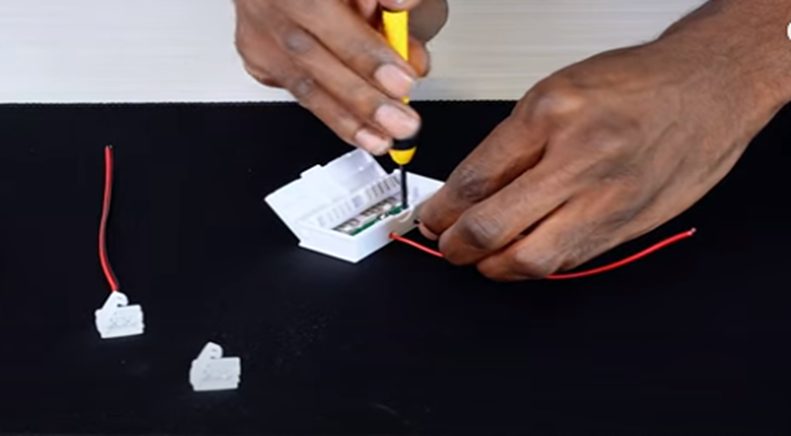
Step 2: Remove the protective cover on the adhesive paper on the flat cable by about an inch.
Step 2: Slide the flat cable into the connector until it stops over the mouth tip. Close the connector.
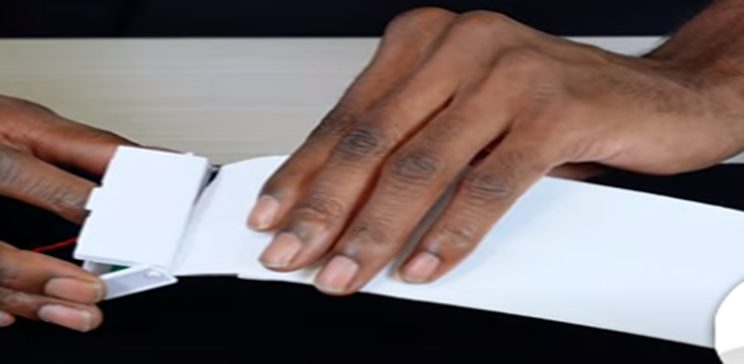
Step 4: Check each connection with a multimedia device to test for power on both connectors.
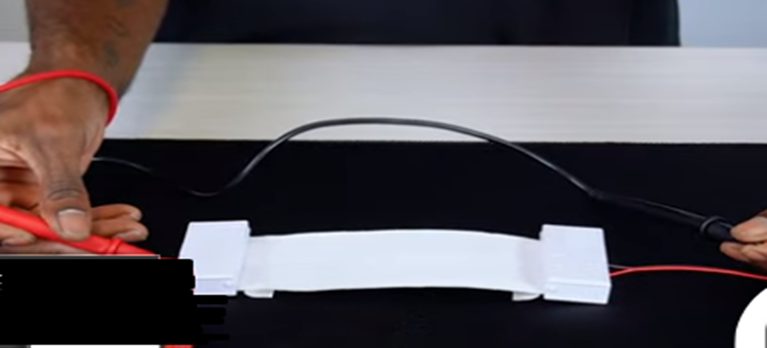
Make sure you measure the length of your floor where you will place the ghost wire before you install them on the floor. It is better to cut the ghost wire longer than shorter. Also, ensure that you install the ghost wire on a dry, clean floor around the edges and gently remove the protective paper over the glue while installing.
You don’t have to rush over it so you don’t mess things up. It is difficult to remove and stick the wire again and it can also damage the wire.
4. Secure Wires to Your Baseboards Using Cable Clips
Cable clips are tiny C-shaped clips featuring built-in nails to fasten the wire in place. The good thing about these clips is that they are cost-effective and come in packs of at least a hundred, so you can use them for a long time. Here are steps to secure speaker wires to the baseboards with cable clips:
Step 1: Choose the spot along your baseboard where you want the cable to run. Lay the cable against the baseboard without pulling at the cable. Make sure that the cable flushes against your floor close to the edges of the wall.

Step 2: Place the cable clips one by one over the wire, hammering them in place. Ensure that the nails face the same direction for a perfect and tidy job.
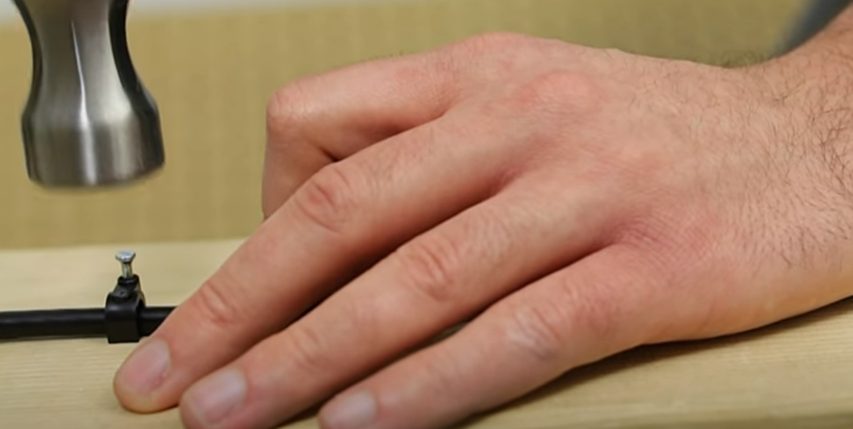
5. Use Adhesive Cable Clips
Adhesive cable clips stick to your baseboard directly, keeping your wires secure and away from wandering feet. They are super easy to install and remove. You will find them in white, black, or clear colors, giving you an option to choose a color that blends with your home decor. Here are steps to use the adhesive cable clips:
Step 1: Stick the adhesive strip gently to the back of your cable clips and peel the protective film away to reveal the glue.
Step 2: Position the cable clips on the baseboard and press the tabs in place to secure them. Make sure you space the clips evenly to get a tidy result.
6. Connect Wirelessly
This is another solution for how to hide speaker wire with hardwood floors. In this case, you don’t even need to use wire at all. It is all about a completely wireless connection. All you need is a Wi-Fi signal to connect the amps to your speaker through a receiver. (1)
The best part is that you can connect wirelessly with existing speakers without buying a new system. It is worth mentioning that the brand of wireless system you have will determine how you will install it.
Generally, you need to hook up the transmitter to the surround set and then hook a receiver to your speaker. You should ensure the pathway to the receiver from the transmitter has a strong signal and should not be blocked by furniture, people, or decorations in the home. (2)
Wrapping Up
These are different solutions for how to hide speaker wire with hardwood floors. Some require that you buy some supplies while you have the tools you need in your home. Any of these will work fine, depending on your preference.
Take a look at some of our related articles below.
References
(1) wireless connection – https://www.sciencedirect.com/topics/computer-science/wireless-connection
(2) furniture – https://www.britannica.com/technology/furniture
Video References
Monoprice
ShowMeCables
